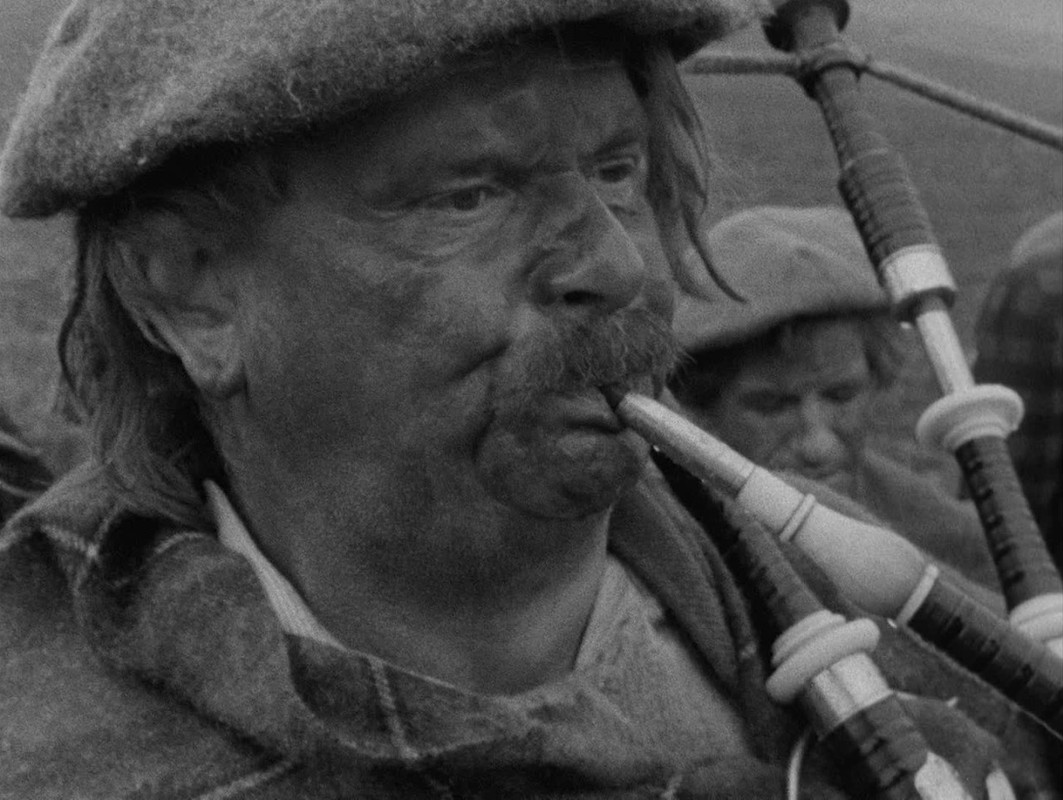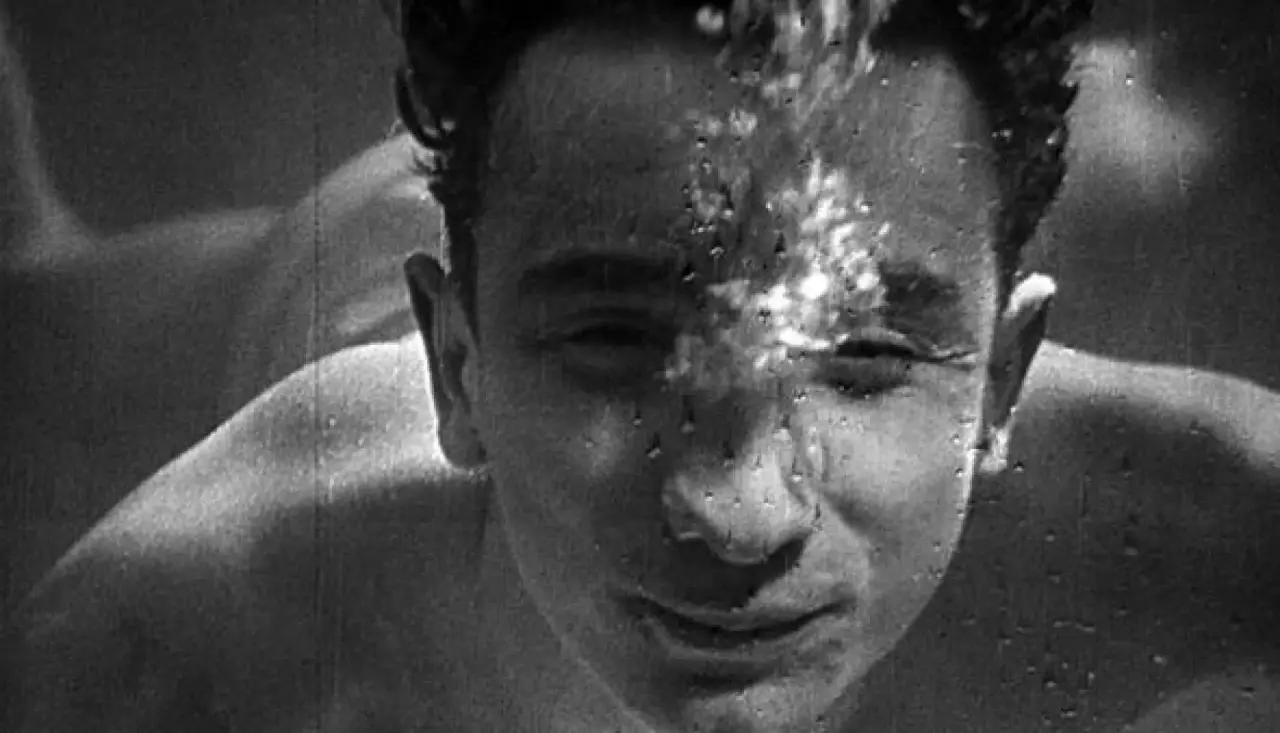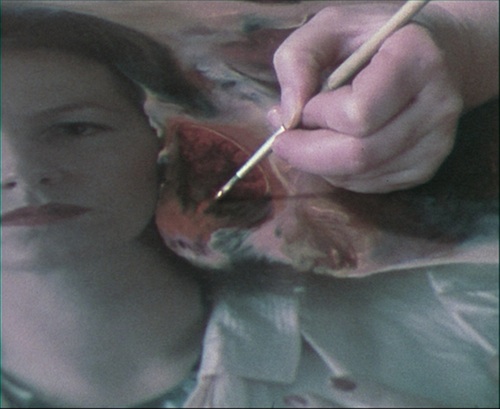“Some people don't know rock 'n' roll came out the same way rap came out. People would say: No, it will never last.” Big Fun in the Big Town (Bram van Splunteren, 1986)
Aug
11
Hip Hop Day

Run-DMC sitting on a limo with a NYC license plate. We only see their Adidas (and Nikes). Under the car a half-eaten apple.
There's something really peculiarly narrow-minded about the Dutch called “verzuiling”, “pillarisation”; society is split into vertical columns and depending on your background you join certain circles. You play soccer, join a trade union, or listen to the radio in a Catholic, Protestant, or social-democratic context. Deeply socialist, (for you American-styled liberals rather extremely) leftist, and seasoned with a generous dash of subversive underground ánd highbrow culture, Dutch radio and TV broadcaster VPRO belongs to the latter.
When VPRO radiomaker Bram van Splunteren came across Beastie Boys' rock/rap crossover 12” She's On It (from the 1985 #HipHop movie Krush Groove), he knew he was onto something and he would play the Beasties and other rappers on his De Wilde Wereld alongside Oingo Boingo and The Fall.
– Schoolly D
Despite the VPRO boasting about their leftie open-mindedness, Van Splunteren's embrace of such lowbrow, poor people culture (not the right kind of frugal-by-choice types but the low-cultured tracksuit wearing ones) didn't sit well with the broadcaster. Minorities boasting about their accomplishments, their cars, girls, gold? That's got no place in this social-democratic-Lutheran column!
Yet time moved on and Van Splunteren was given a budget to make a TV program about that weird talking-over-drum-machines music. With a small crew that included Belgian comedian/musician Marcel Vanthilt – who would sporadicly rap with his oddball New Beat group Arbeid Adelt! – Van Splunteren explored the music from the then-still predominantly Black neighbourhoods in the Big Town: the Bronx, Harlem, Queens, while Vanthilt interviews everyone available; from a boasting LL Cool J and his grannie to a very green Biz Markie and old old old skoolers The Last Poets.
Over time, this obscure 1986 Dutch TV documentary Big Fun in the Big Town has become an essential snapshot of hip hop culture. It captures an optimism and fire elemental to survive Reagan's America and highlights the urge to continue the Black struggle that the Panthers and others set in motion.
Happy birthday, hip hop. To many more powerful years to come.
documentary
“These children that come at you with knives, they are your children. You taught them. I didn't teach them. I just tried to help them stand up.” Manson (Robert Hendrickson + Laurence Merrick, 1973)
Aug
6
American Family Day

A large group of hippies somewhere outside in front of canopy. They appear to be mid-song, posing as if in a stage play. One of them wears a T-shirt with a Christ-like, bearded man on it. On closer inspection, some familiar faces. Captions reads “The Family”. DPs: Jack Beckett & Louie Lawless.
Everything America stood for – God, liberty and justice for all – fell apart in the 60s. A much-loved president and family man killed on live television. Teenagers shipped to a country many never heard of before, only to end up as cannon fodder. Peace loving middleclass white kids from well-to-do families gathering en masse in Haight-Ashbury, collectively fell to bum trips and bouts of gonorrhoea. What America needs is family. Someone who takes you in, understands you, sings you songs and feeds you. An older man with friendly eyes appears on the scene, doing just that.
– Charles Manson, testimony
What the press dubbed The Family was a microcosm of American society; a loose collective of lost kids. Taken in by charismatic peddling pimp #CharlieManson with a steady supply of #LSD and a place to be themselves, rootless kids like Lynette “#Squeaky” Fromme and Paul Watkins were finally part of a family again. The family grew too; besides more lost souls and the occasional Beach Boy visiting Spahn Ranch, babies were born at the Devil's Slide.
Hendrickson and Merrick's Manson offers a candid and by times surreal portrait of a few #MansonFamily members (Squeaky makes out with a riffle, purring about how killing is like having an orgasm while Atkins lays out her plans to murder Frank Sinatra) right in the middle of the spectacle [sic] court-case. It was even nominated for an Oscar – which went to that other charismatic 70s evangelist, Marjoe (1972), while Manson was banned after Fromme's botched assassination attempt on President Gerald Ford in '75 and was lost for decades.
Stylistically inspired by Woodstock (1970) and soundtracked by the Family themselves, Manson remains a fascinating curio in the undying output of #Mansonsploitation movies. However gruesome, the American family is forever cemented in that holy cornerstone of self-immolation.
“And wherever he went, he took with him his music, his poetry, his language and his children… thus within a century of Culloden, the English and the Scottish lowlanders had made secure forever their religion, their commerce, their culture, their ruling dynasty.”Culloden [The Battle of Culloden] (Peter Watkins, 1964)
Jul
27
Bagpipe Appreciation Day

John Hunt Leigh in Culloden, pìobaireachd “ceòl mór” (litt. piping “great music”). DP: Dick Bush.
Great Highland #bagpipes, or a' phìob mhòr as they're called in Scottish Gaelic, are traditionally played on the battlefield. Peter Watkins' Culloden moves the senseless bloodshed from 1960s Vietnam to the Scottish Highlands of 1746.
– narrator
The most clearly it's seen in the men's eyes. That stare we recognise all too well from the many images that reached the west in the 60s, ever before and after.
“À bas le colonialisme ! À bas l'imperialisme !”Festival panafricain d'Alger [The Panafrican Festival in Algiers] (William Klein, 1969)
Jul
26
One Voice Day

Black hands holding each other. In translation the caption reads “Down with colonialism! Down with imperialism!”. DP: William Klein et al.
In typical Western fashion the credits for William Klein's Festival panafricain d'Alger focusses on the French and American participants. After Algeria regained its independence in 1962, it became Africa's – and the #AfricanDiaspora's – centre for postcolonial and liberation moments.
The 12-day Festival panafricain attracted 5000 people from all over the African continent, as well as liberation fighters from the United States.
Moć [Power] (Vlatko Gilić, 1973)
Jul
25
Threading The Needle Day

One of the men, threading the needle. He's young, bearded, and shirtless and in what appears to be a cave or cellar. DP: Ljubomir Ivković.
Slobodan Ćirković aka Roko was (or is? I cannot find a lot of information online) a Serbian hypnotist capable of making people painlessly self-inflict torment. In Vlatko Gilić's short and rather disturbing Moć, Roko initiates a large group of men to thread a needle and slowly, going from him to the next to the other, connect the one thread through their bodies until all of them are stitched into one.
Strangely homoerotic and determinately violent, Moć feels deeply rooted in the #Serbian psyche. There's beauty and an unflinching élan-vital under the skin, a tenderness that comes with great, unmentionable #pain, love and death.
Sueños de hielo [Dreams of Ice] (Ignacio Agüero, 1994)
Jul
15
Arctic Sea Ice Day

Arctic ice in transit from Antarctica to Seville. DPs: José Luis Arredondo, Germán Liñero, Gastón Roca & Luis Roca.
Taris, roi de l'eau [Taris, King of the Water] (Jean Vigo, 1931)
Jul
12
freebie: Swim A Lap Day

Jean Taris in his element. DP: Boris Kaufman.
A proto-Jean Painlevé exercise avant la lettre.
“Above all… don’t cut a single image.”Araya [Araya l'enfer du sel] (Margot Benacerraf, 1959)
Jul
5
Venezuela Independence Day

Workers in front of pyramid-shaped piles of salt. DP: Giuseppe Nisoli.
– Jean Renoir in a letter to Margot Benacerraf
“Salt, pepper, sugar, ketchup and napkins, New York.” 66 scener fra Amerika [66 Scenes from America] (Jørgen Leth, 1982)
Jul
4
Independence Day

Director Jørgen Leth capturing Tsé Biiʼ Ndzisgaii [Merrick Butte] in Monument Valley, AZ, for the opening scene. He's waving a small American flag in front of the camera. DP: Dan Holmberg.
A road movie becomes interesting when the traveller is a stranger. When he or she takes that first step, head still firmly planted at home, soul on its way out.
Jørgen Leth is a Danish documentary maker who in the early 80s sent sixty-six postcards from America. These postcards form a #travelogue of bewilderment. The #landscape, #food, language, anything an American may take for granted framed in a moving still. The American, ever ready for stardom, poses and orates. The scenes become show, regardless if it's a New York cabbie or a man famously (falsely) credited for predicting fame, slowly eating a Whopper.
The resulting 66 scener fra Amerika is as much a time capsule as it is a portrait of forever.
“An diesem Tag war das Bild, drei Monate nach Beginn und 67 Arbeitstagen fertig.”Ein Bild von Sarah Schumann [A Picture of Sarah Schumann] (Harun Farocki, 1978)
Jun
26
National Sarah Day

A close-up of the artist's hand at work. More stills and details about this film on Frieze. DP: Ingo Kratisch.
Commissioned for a West-German TV series called Kunstgeschichten (litt. both “art stories” and “#art histories”), filmmaker Harun Farocki visits artist Sarah Schumann in her #Berlin studio.
– narrator
The resulting documentary shows the process of creating one art piece over the course of nine weeks. Schumann's work in that period consists of collage portraits of women important in her life.